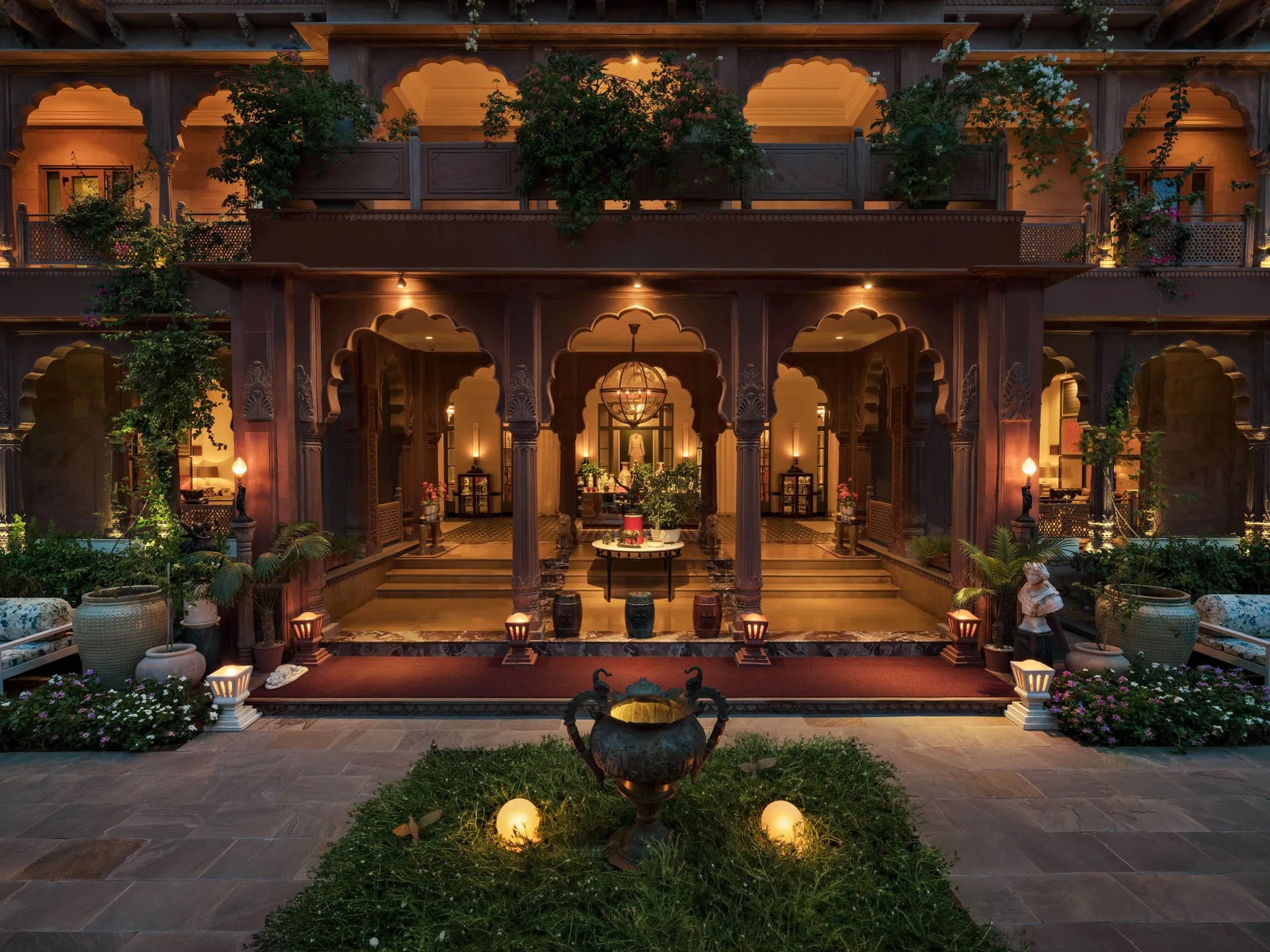The Best Hotels and Resorts in Asia: The Gold List 2025

Consider the Gold List the answer to the question our editors get asked more than any other: What are your favorite places to stay? Our 31st edition of the world’s greatest hotels and cruises captures nearly a year’s worth of work. This collection represents hundreds of hours of researching, scouting, and impassioned debating by our team of editors in seven cities across the globe. But more than that, it reflects our ongoing love affair with the places where we stay, which often become our gateways to entire destinations. Read on for the best hotels in Asia to inspire your next trip.
Gangtey Lodge
At Gangtey Lodge travel-weary guests are greeted with a welcome song so powerful it reduced our party to tears, a hot towel, sweet tea by the fire, and a five-minute massage. “We wanted to create something for the backpackers that now want a little more luxury,” says Khin Omar Win, who co-owns the lodge with husband Brett Melzer. Luxury here comes in the form of personalized meals but also silence, space, and a sense of being cocooned by the sweet-natured staff who anticipate your every need. From $700. —Anna Prendergast
Taj Falaknuma Palace — India
With its dreamy frescoes, Corinthian columns, and Ostler chandeliers, Hyderabad’s storied Taj Falaknuma Palace had been a beloved residence of the ruling nizam—one of whom was famously depicted on a 1937 Time magazine cover as the “Richest Man in the World”—before falling into disrepair for decades. The hilltop aerie has been a fixture of my annual vacations in Hyderabad, from a childhood visit when it was still shuttered and shrouded in cobwebs to countless intimate dinner parties, afternoon teas, qawwali concerts on the gardens at sunset, and a memorable 75th-birthday celebration for my father last winter—complete with a flute serenade of “Happy Birthday” at breakfast under the stained-glass dome of the Gol Bungalow terrace. For the special way it brings Hyderabad’s rich history and traditions to life at every corner, Falaknuma will always have my heart. From $450. —Sarah Khan
The Dwarika’s Hotel — Nepal
Ian Schrager may have made lobby socializing a thing when he sparked the boutique-hotel revolution back in the mid-80s, but at Dwarika’s it’s all about the courtyard. Soundtracked by birdsong, it feels like being inside a secret walled garden—a bubble of tranquility from the cacophony of Kathmandu. The hotel is both a marvel of conservation and a monument to historic Newari architecture because it was gradually assembled from eaves, windows, and pillars rescued by Dwarika Das Shrestha. Now grandson René is continuing the project, as CEO of Dwarika’s Group of Hotels and Resorts. But the property more than a museum piece with yoga lessons on the rooftop, a swimming pool surrounded by sculpted serpents, and some of the best momo dumplings in Nepal; this is an immersive, deeply atmospheric microcosm of the Kathmandu Valley. From $410. —Rick Jordan
Aman Kyoto — Japan
Serene. Timeless. Escapist. And deliciously crowd-free. Nature and its subtlest micro-shifts are the main protagonists at Aman Kyoto. At its heart lies an otherworldly “secret garden” that wavers between wild and cultured, the hotel is set against tumbling mountainside forests in a quiet northeastern corner of the ancient capital. Mindfulness is nonnegotiable while navigating the moss-covered stone pathways or relaxing within the peaceful minimalism of the 24 suites. Housed in clean-lined black timber pavilions designed by Kerry Hill, the accommodations feature tatami floors, hinoki bathtubs, ceramic abstractions, and haiku-inspiring views through walls of windows. Luxury lies in the property’s simplicity: Instead of a swimming pool, picture a small boulder-strewn onsen alongside spa treatments imbued with a sense of the sacred and the intuitive omotenashi warmth of the staff. Food is treated with no less reverence, from meticulous kaiseki craftsmanship at Taka-an to contemporary land-to-table cuisine in the Living Pavilion. All in all? The perfect place to recover from Kyoto temple fatigue—and reconnect with the present moment. From $2,675. —Danielle Demetriou
Mandarin Oriental, Bangkok — Thailand
Some hotels lose their luster after a while. Others, like the Mandarin Oriental, Bangkok, only get better with age. This Southeast Asian hidey-hole has been around since 1876 but doesn’t feel mired in the past. Frequent spruce-ups have kept it looking tip-top, while an ever-evolving lineup of a dozen or so restaurants (including the new Kinu by chef Takagi Kazuo and classic Thai restaurant Baan Phraya) keep a finger on the pulse of Bangkok’s dining scene. And then there’s the spa, with CBD-oil-infused massages, ice baths, and rubdowns using herbs from northeast Thailand’s Isan region, that still sits in a league of its own. They just don’t make them like this anymore. From $650. —Chris Schalkx
Narendra Bhawan Bikaner
This hotel is much like a cabinet of curiosities and so the vibe is eclectic, hedonistic, and easy-going. Lazy breakfasts lead into lazier lunches and dinners that end when you retire. In between, you could go carpet shopping and visit local attractions, trusting that your G&Ts will be waiting upon your return. You could also view the city as you lounge by the hotel’s rooftop pool and get yourself a massage during which Bach Flower remedies are used. However you play it, you’ll probably leave humming that Edith Piaf number “Non, Je Ne Regrette Rien.” You’ll find the lyrics painted across the red piano in the foyer. From $150. —Prasad Ramamurthy